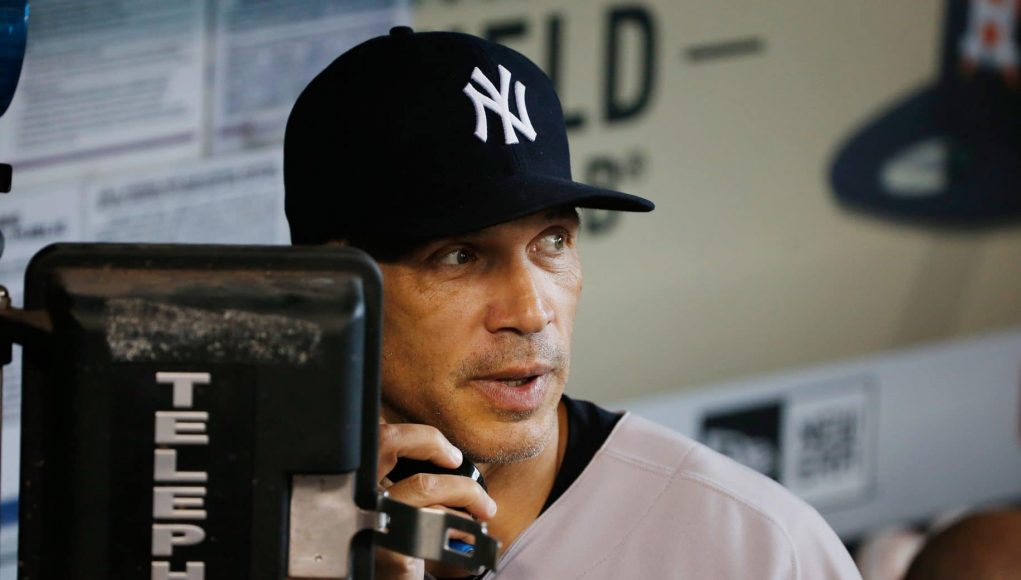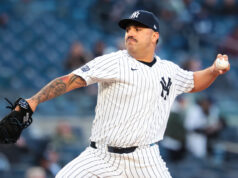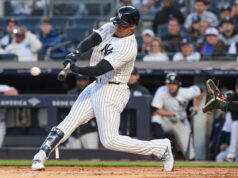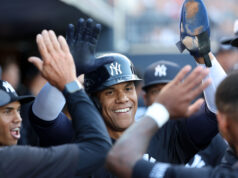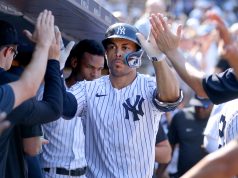Both the New York Mets and Yankees have hopped on board the latest trend in baseball — the bullpen. This explores the consequences of that trend.
The New York Yankees hopped on board baseball’s Bullet Bullpen train some time ago, and the New York Mets have plans to catch the last train leaving the station this season. Where does this leave the role of starting pitching and, generally, the future of baseball?
The almighty bullpen. As with all major league teams, both the Mets and Yankees are aware of trends that come along periodically in baseball. Some, like how much of his stockings a player shows, are frivolous and have nothing to do with the game as it’s played. Occasionally, though, a trend develops that largely affects the outcome of games. One of those patterns is upon us now, and its impact is far-reaching. This is to explore the repercussions of baseball’s ever-increasing reliance on the bullpen artists.
A look back
But first, let’s take a minute to recall two of baseball’s trends from the past. Because as it is with patterns of any sort, what goes up usually comes down.
The 1960’s and 70’s were dominated by the speedsters, and we recall the likes of Maury Wills, Joe Morgan, Lou Brock, Tim Raines, and a host of others who prevailed on the basepaths. For each, their style of play won them a trip to the Baseball Hall of Fame.
And lest we forget Rickey Henderson, who broke the record set by Ty Cobb for most career stolen bases as a Yankee in 1991:
In 2017, Billy Hamilton (Reds), led the majors with 59 stolen bases. Cameron Maybin (Astros) was the only other player to finish with more than 30. Giancarlo Stanton finished with 59 home runs, and by the middle of September, 31 players had already hit 30 or more home runs marking one of the new trends in baseball in which stolen bases are discounted, and home runs are king.
Not too long ago, Joe Maddon, when he was managing Tampa Bay, went wild with the use of the shift to combat hitters who never go the other way. Some, like Bill Baer, writing for MLB.com this past June, have argued that the shift destroyed the career of Ryan Howard. That might be a stretch, but it’s clear the shift has had a significant impact on the game. It seemed to me, though, that we saw less and less of it last season, and if that’s true, the shift is on the downward side of its popularity, leaving it to join the burial grounds where the stolen base lies.
The bullpen trend could be a very different animal, though, because it involves juxtaposing the skill set of so many players, or in this case, pitchers. Consider this, just as a for instance. Who is going to pay their starting pitchers the money they earn now to pitch five innings before turning the game over to the bullpen, all in the name of the new “strategy” in baseball?
Business Insider did a fascinating study of the ten highest salaries by position for 2017. The average salary for a starting pitcher was $22 million, while relief pitchers tipped in at only $6.9 million. How long can we expect that disparity to prevail? In fact, the pendulum is already swinging the other way as indicated by the $86 million five-year deal the Yankees gave Aroldis Chapman.
And it’s not just closers who will be moving up the salary ladder if the trend continues. Even middle relievers are moving up in the world. Jerry Blevins, for example, signed with the Mets for $7 million to pitch for the team in 2018.
Toss in these reported 2018 salaries for middle relievers assembled by Spotrac, David Robertson ($13 million), Brett Cecil ($7.5 million), Andrew Miller ($9 million), and Darren O’Day ($9 million), and if the squeeze isn’t already on for starting pitchers, it will be very soon.
Yankees and Mets hop on board
As mentioned before, Brian Cashman put the Yankees on the bullpen train last summer when he acquired Robertson and Tommy Kahnle from the White Sox, adding to the already stalwart Yankees bullpen. It reached the point in September and on into the playoffs that Joe Girardi was removing his starter at the very sign of trouble because he knew he was locked and loaded in the bullpen. That trend is expected to continue, no matter who the Yankees hire as manager.
And the biggest news emerging from the Mets camp so far this offseason is that they are all-in and ready to offer Bryan Shaw (Cleveland Indians) a multi-year deal worth beaucoup money. Plus, SNY.com is also reporting the Mets have reportedly shown interest in relievers Addison Reed, Brandon Morrow and Mike Minor.
Couple that with the Mets announcing a policy of limiting the length extended to their starters as a way of avoiding injuries, and you have a clear indication the Mets have hopped board as well. Before you buy into that, though, take a look at Nick Stellini’s piece that appeared recently in The Sporting News. It may not change your mind, but like this piece, hopefully, it’s food for thought.
John Smoltz, Hear, Hear
Siding somewhat with Stellini, I find myself chuckling whenever John Smoltz appears on MLB Tonight, and his cohorts get him going on his thoughts about pitchers in general today, but especially starting pitchers.
Smoltz, who made it to the Hall of Fame as both a starter and closer, almost stands on his head in a (usually) vain attempt to convince others that pitchers are fragile only because we have made them that way.
He argues if you only expect a pitcher to go five innings, he will. Moreover, he claims the more we baby pitchers by limiting them with that all-oppressive “pitch count,” the less the chance they will have to build up the required arm strength to pitch further into games.
And Smoltz is not necessarily arguing for the days when 28 percent of all games started in 1974 were completed. But he sure as hell is talking about the paltry 2.4 percent of games started in 2014 that went as complete games.
Smoltz has other theories about pitching as well. Take heed of what he has to say about the need for mechanics when throwing the slider:
Be that is it may, you can’t fight City Hall and the trend, at least for now, is manifested in baseball. Bullpens rule.
But what is also clear is there is likely to be pushback from starting pitchers who see their role declining. Pitchers like Jacob deGrom, Noah Syndergaard, Luis Severino, and Masahiro Tanaka are not expected to be happy campers when they look at their manager walking out to bring in a reliever with the bases loaded and no one out – when it’s only the third inning!
That’s only a matter of pride. Wait and see, though, what happens when their salaries go down proportionate to their value to their team.
According to Baseball Reference, Boston starter, Chris Sale, led the majors in innings pitched last season with 214. This almost reaches the goal of nearly all starters: to average seven innings each start. What we end up with is a good tongue-in-cheek article written by Tyler Kepner appearing in the New York Times with the title, “300 Wins? Today, Try 200 innings”.
Trends are typically not change
Trends in baseball, as with our culture in general, need to be distinguished from fads. Hula hoops and Cabbage Patch dolls are fads which have no lasting value. And very seldom do trends become institutionalized “change.”
Donald Trump is a trend in American thinking in the same way the reliance on bullpens is one in baseball. The question is whether or not they have “sticking power” to become an actual change of lasting consequence, good or bad.
Personally, I am not enthralled with the move away from starting pitching we see today in baseball. It flies in the face of MLB and all they are trying to do, for instance, to reduce the time of games. I’m not particularly excited about the need to get home by 11:00 p.m. ET from attending a night either. I’m just saying these things have consequences and sometimes, the results, or consequences, are not foreseen or predictable at the time they are undertaken (Hello, Mr. Trump).
But in any case, the Bullpen Train in baseball has already left the station and the outcome of the 2018 season for both the Mets and Yankees will rest heavily on how well that accepted trend stands up, not only for this season but over time.


